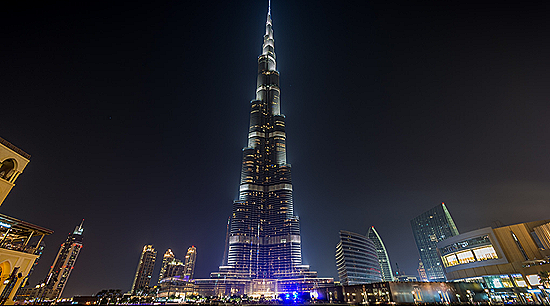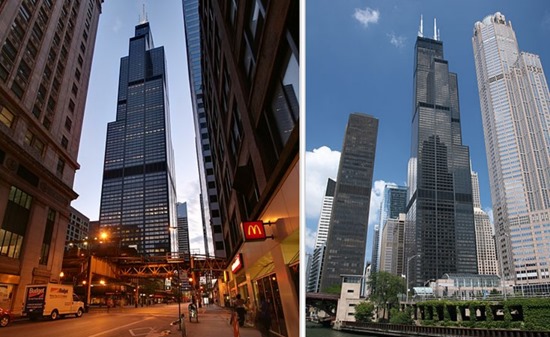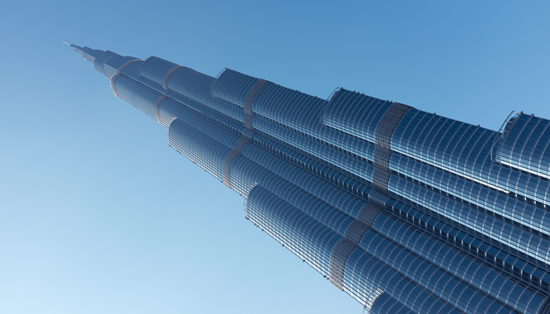
You may have snaked through a long line of fellow tourists to trek to the observation deck for a breathtaking view from the top of the city, but do you know the stories behind many of the world's most iconic skyscrapers? We've stacked up some of the details.
1. The Gherkin - London
Known informally as "The Gherkin" for its pickle-esque shape, 30 St. Mary Axe was dreamt up after a 1992 explosion in London’s financial district destroyed the Baltic Exchange building. Plans for the original design - the much taller Millennium Tower - were scrapped for fears it could affect air traffic into the Heathrow Airport and the sight-lines of St. Paul’s Dome. It turns out that the pickled inspiration was a winner; when the cylindrical building opened in 2004, it gained quick notoriety, and was soon used as a symbol for London on bid posters for the 2012 Olympic Games.
2. Willis Tower - Chicago
In 1969 the world’s largest retailer, Sears Roebuck and Company, decided they needed an office space for their roughly 350,000 employees. Four years, 2000 workers, and enough concrete to build an eight-lane, five-mile highway later, the 110-story Sears Tower was complete. (In 1988, Sears moved out of the building; 21 years later it was renamed the Willis Tower after global insurance broker Willis Group Holdings.) As a memorable finishing touch, 12,000 construction workers, Chicagoans, and Sears employees signed the building’s final beam.
3. Bank of China Tower - Hong Kong
When famed Chinese architect I.M. Pei was tasked with designing this 70-story structure, he was dealt a number of challenges. He needed to craft a tall building (it stands at 1209 feet) in a typhoon zone and create a design that was pleasing to the Chinese people. His masterpiece - opened in 1990 after a five-year construction - is supported by five steel columns meant to resist high-velocity winds, and is inspired by bamboo shoots, which symbolize strength and prosperity.
4. Chrysler Building - New York City
A mere 11 months after it gained the title of tallest building in the world in 1930 - thanks to the last minute addition of a 186-foot spire - this art deco wonder surrendered its title to the Empire State Building. But it has long been known as one of the world’s prettiest structures. When automobile tycoon Walter P. Chrysler took over financing, he strove to add glamor to New York’s east side. The design already featured a multi-story section of glass corners and a stainless steel crown, but he requested the addition of eagle-esque gargoyles designed like the hood ornaments on his cars.
5. Petronas Twin Towers - Kuala Lumpur, Malaysia
The world’s tallest twin towers (88 floors each) were completed in 1996 after a three-year build. The steel-and-glass façade was created to reflect elements found in Islamic art, while the sky bridge - between the towers’ 41st and 42nd floors - was crafted with safety in mind. It’s not bolted to the main structure, but rather designed to be able to slide in and out of the buildings to keep it from snapping during high winds.
6. Hotel & Casino Grand Lisboa - Macau, China
When crafting this 58-floor hotel and casino, the Hong Kong architects didn’t take any chances. The US$385 million structure, which opened in 2008, was built to resemble a bottleneck - the idea being it would keep any cash from leaking out, according to feng shui. The outlandish exterior, meanwhile, was intended to look like a combination of crystals, fireworks and the plumes of a Brazilian headdress - all thought to symbolize prosperity.
7. Empire State Building - New York City
For four decades, the famed Manhattan skyscraper held tight to the distinction of being the world’s tallest. (It was eclipsed by the World Trade Center towers in 1972.) But the US$41 million structure - featured in movies such as King Kong (1933) and Sleepless in Seattle (1993) - also scored another record: It was built in just one year and 45 days, the quickest for a building of its size. Each week, 3000 workers erected four-and-a-half new floors.
8. Shanghai World Finance Center - Pudong, Shanghai, China
This 101-floor behemoth was built to withstand destruction. There are fireproof floors, wind dampeners, and a glass skin to protect against lightning. (It can reportedly survive a magnitude 8 earthquake.) The building has also weathered adversity. Slated for construction in 1997, progress was delayed due to the Asian financial crisis before it was finally completed in 2008. And the initial design, which featured a circular opening at the top rather than the now rectangular one, had to be reconfigured when critics complained it too closely resembled the rising sun on the Japanese flag.
9. Taipei 101 - Taipei, Taiwan
Fashioned to resemble a growing bamboo stalk - a Chinese sign of everlasting strength - this US$1.8 billion building boasts two records. When it was opened in 2004 (construction took five years), it was the first skyscraper to surpass the half-kilometer mark. It also claims the title of fastest passenger elevator. After boarding on the fifth floor, riders reach the 89th floor observation deck in a speedy 37 seconds.
10. CN Tower - Toronto, Canada
In a bid to demonstrate the strength of Canadian industry, railway company Canadian National set out to build the tallest tower in the world. For 40 months, 1537 workers toiled 24 hours a day, five days week, reaching completion in April 1975. (A 10-ton helicopter dubbed "Olga" was commissioned to bolt the 44 pieces of the antenna in place.) In 1995, the American Society of Civil Engineers deemed it one of the Seven Wonders of the Modern World, but 15 years later, its height was surpassed by China’s Canton Tower.
11. Burj Khalifa - Dubai, United Arab Emirates
At 2716 feet (more than twice the height of the Empire State Building!) and half a million tons, the gleaming desert structure holds a number of records. Among them: tallest building in the world and the tallest freestanding structure. The US$1.5 billion, state-of-the-art mega skyscraper was designed by the same firm that dreamt up the Willis Tower and New York’s One World Trade Center, and it opened in 2010 after six years of work. The opening ceremony featured a light and water effects show and some 10,000 fireworks!











No comments:
Post a Comment
Please adhere to proper blog etiquette when posting your comments. This blog owner will exercise his absolution discretion in allowing or rejecting any comments that are deemed seditious, defamatory, libelous, racist, vulgar, insulting, and other remarks that exhibit similar characteristics. If you insist on using anonymous comments, please write your name or other IDs at the end of your message.